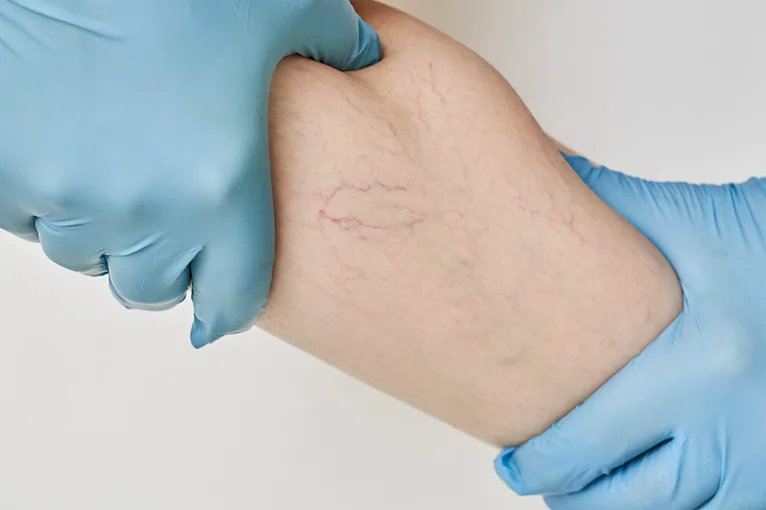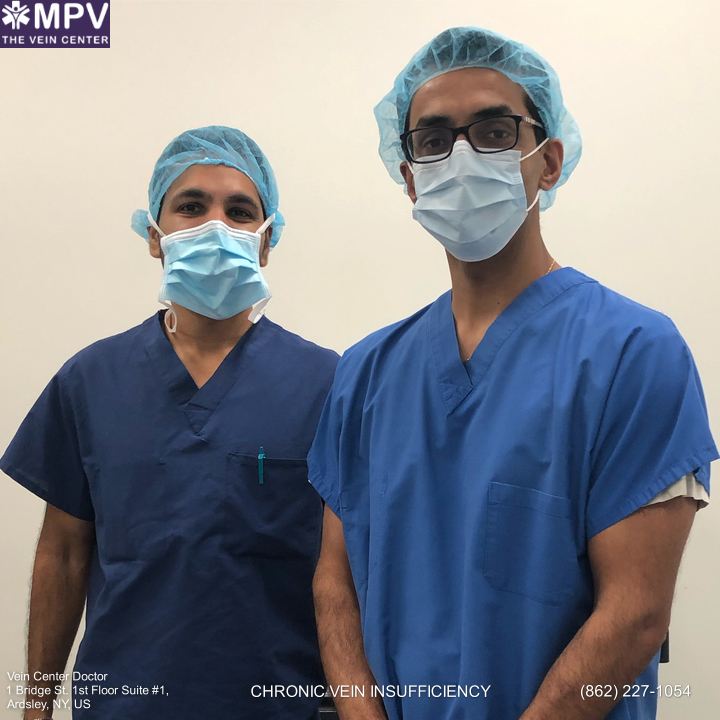You may be fortunate if you're working in a company that offers paid sick leave. But to most who don't because of the lack of federal law requiring paid sick leave to employees, it can be burdensome to miss work days just because of an illness, like chronic venous insufficiency. While some can bear this burden, others bow out.
So, generally, can you work with chronic venous insufficiency? You can work with chronic venous insufficiency given that you can tolerate its signs and symptoms. However, you may risk exacerbating its clinical manifestations, especially when your work requires prolonged sitting or standing. Neglecting chronic venous insufficiency signs and symptoms may also lead to complications that can even be life-threatening.
Living with unwanted veins is a thing of the past, when you can simply schedule a free consultation with Vein Center Doctor and find your ideal solution today.
Lifestyle modifications may be followed for the relief of chronic venous insufficiency symptoms while aiming to prevent their exacerbation. This may be done if you're not yet ready for interventional treatments or simply have no time to do so.
Lifestyle modifications that individuals who suspect that they have chronic venous insufficiency include the following:
However, keep in mind that chronic venous insufficiency progresses over time, especially when the nature of your job requires you to sit or stand for long periods of time. It's thus still best to manage them with pharmacologic or interventional therapy to prevent complications that may make you incur more sick leaves in the long run.
Patients with recurring cellulitis or a bacterial skin infection characterized by redness, swelling, and pain of the affected skin are an indication for hospitalization. Other signs and symptoms of worsening soft tissue infection also warrant hospitalization for a patient, which include the following:
Similarly, abnormal laboratory test results also warrant hospitalization for patients with chronic venous insufficiency. These abnormalities include the following:

Chronic venous insufficiency may present with a wide range of clinical manifestations, from nonspecific symptoms to skin changes. Specifically, these signs and symptoms include the following:
Through time, especially when left untreated, chronic venous insufficiency may progress to complications that may range from just being too painful to bear or being life-threatening. These complications associated with chronic venous insufficiency include the following:
Chronic venous insufficiency is a multifactorial venous disease, the certain etiology of which is still unknown. However, some mechanisms are speculated to cause the development, progression, and exacerbation of chronic venous insufficiency. These mechanisms include reflux, obstruction, or a combination of these two.
Normally, most veins have valves, structures that allow the unidirectional blood flow to facilitate the return of blood from the legs to the heart. Impairments in the functioning of these valves cause reflux, in which backflow of blood occurs and causes the pooling of blood in the veins.
This promotes hemodynamic changes and venous hypertension which then promotes the release of vasoactive substances and inflammatory mediators. Venous wall remodeling may also occur as a result of these changes in the environment of the vein.
On the other hand, obstruction occurs as a result of thrombosis or clotting which further exacerbates the signs and symptoms of chronic venous insufficiency. This occurs as in deep vein thrombosis or pelvic vein thrombosis.
Chronic venous insufficiency may be diagnosed by taking the medical history of the patient, in which the risk factors of chronic venous insufficiency such as increasing age, a family history of varicose veins, obesity, and previous leg trauma may be ascertained.
A physical exam may also be done where an inspection of the signs and symptoms of chronic venous insufficiency exhibited by the patient is done. Maneuvers such as the Brodie-Trendelenburg Test may also be done to differentiate the reflux if it's superficial or deep.
Complementary to history taking and physical examination to diagnose this venous disease are non-invasive and invasive imaging procedures to visualize the affected vein. Note that invasive imaging procedures are reserved for instances when it's hard to visualize the leg vein that's affected or surgical management will be done.
Examples of non-invasive imaging procedures include the following:
While examples of invasive imaging procedures include the following:
Treatment of chronic venous insufficiency may be done through conservative or interventional ways.
Conservative management entails lifestyle modifications as previously described and pharmacologic management for symptomatic relief of the signs and symptoms of the disease, such as diuretics for the leg edema and topical steroid cream or ointment for stasis dermatitis.
Interventional management, on the other hand, can be an outpatient procedure or can also be a surgical procedure.
Surgical treatments, which include vein stripping or vein ligation, are the mainstays of treatment of chronic venous insufficiency. Complications of surgical treatments include bleeding and deep vein thrombosis.
Outpatient procedures, on the other hand, offer the benefits of shorter hospital stays, faster recovery time, and comparably milder complications than surgical treatments.
Find exactly what you need to get rid of your vein-related problems. Dr. Sood and the rest of our team at Vein Center Doctor are ready to help: schedule your free consultation today.
At Vein Center Doctor, we're committed to helping you restore your vein health back in shape. We combine the expertise and knowledge of our team headed by Dr. Rahul Sood with the latest technologies in outpatient vein treatment. These outpatient procedures include radiofrequency ablation, endovenous laser therapy, sclerotherapy, VenaSeal, and compression therapy.
Radiofrequency ablation is a minimally-invasive procedure where a heat-tipped catheter is inserted up to the saphenofemoral junction under local anesthesia and with the guidance of ultrasound.
It entails the delivery of radiofrequency energy through the catheter, which injures the vein walls of the damaged vein. Microscopically, what happens in veins where radiofrequency ablation is done is collagen denaturation and vein constriction. After this, blood is then redistributed to healthy veins.
This procedure can't be done in patients with small diameter veins where catheterization is impossible and in patients with residual thrombosis. Complications associated with this procedure include burns, bruising, and infection.
Similar to radiofrequency ablation, endovenous laser treatment is done via the cannulation of the affected vein up to the saphenofemoral junction under local anesthesia and with ultrasound guidance.
Laser energy will be delivered through the laser-tipped catheter, which also injures the vein walls. This causes slower atrophy of the damaged vein than radiofrequency ablation. Through the closure of the veins, blood flow will proceed to other functional veins of the body.
Compression therapy is done after the procedure to facilitate more rapid recovery.
Despite its benefits, endovenous laser treatment also can't be done on small tributaries where cannulation of the vein is impossible and when the patient has residual thrombosis. Post-procedure complications include bruising and hyperpigmentation.
Sclerotherapy involves the delivery of chemicals called sclerosants which irritate the vein wall and causes its constriction and thus its closure. It's applicable for use in smaller dilated veins like spider veins and reticular veins.
Typical sclerosants are hypertonic saline and sodium tetradecyl sulfate, and these may come in liquid or foam form. While foam injections are more effective, they can put you at risk of getting more complications than other treatments.
Sclerotherapy can't be done when a patient is pregnant or breastfeeding. It can't also be done in patients with allergies to the sclerosants used in the procedure. Complications may include hyperpigmentation and skin necrosis.
The VenaSeal closure system is an innovative outpatient procedure that doesn't need to be done under local anesthesia. Through the guidance of ultrasound, the catheter is inserted. Saline flushing will then be done before the delivery of the VenaSeal adhesive, a special formulation of n-butyl-2-cyanoacrylate.
Delivery of the VenaSeal adhesive is done in a manner that's repeated until the whole length of the affected vein is covered. The trigger is pushed for 3 seconds to deliver 0.1 cc of the VenaSeal adhesive to the vein then compression of the area is done for 3 minutes.
Compression therapy is considered to be the standard of care in terms of treating patients with chronic venous insufficiency, including those with venous stasis ulcer.
It entails the use of compression garments like compression stockings and medical devices like intermittent pneumatic compression pumps to provide graded pressure, the level of which is based on the clinical manifestation.
This type of therapy is cost-effective and safe, although issues surround its use such as regarding the compliance of the patients and the lack of standardization of the pressure provided by the garments or devices. Complications associated with this treatment option include ischemic ulcers and compression ulcers.

You may continue working while experiencing symptoms of chronic venous insufficiency but you should keep in mind that the disease may progress into worse complications. It's still best not to tolerate the signs and symptoms of chronic vein insufficiency and manage them through interventional methods.
At Vein Center Doctor, we offer the best outpatient vein treatments available, complemented by the skills and expertise of our team headed by Dr. Rahul Sood. Our world-class outpatient vein treatments can improve your quality of life and bring back your peace of mind as soon as possible. Start your pain-free journey with us by contacting 1-862-500-4747.
Find exactly what you need to get rid of your vein-related problems. Dr. Sood and the rest of our team at Vein Center Doctor are ready to help: schedule your free consultation today.
Most Insurance is accepted for treatment